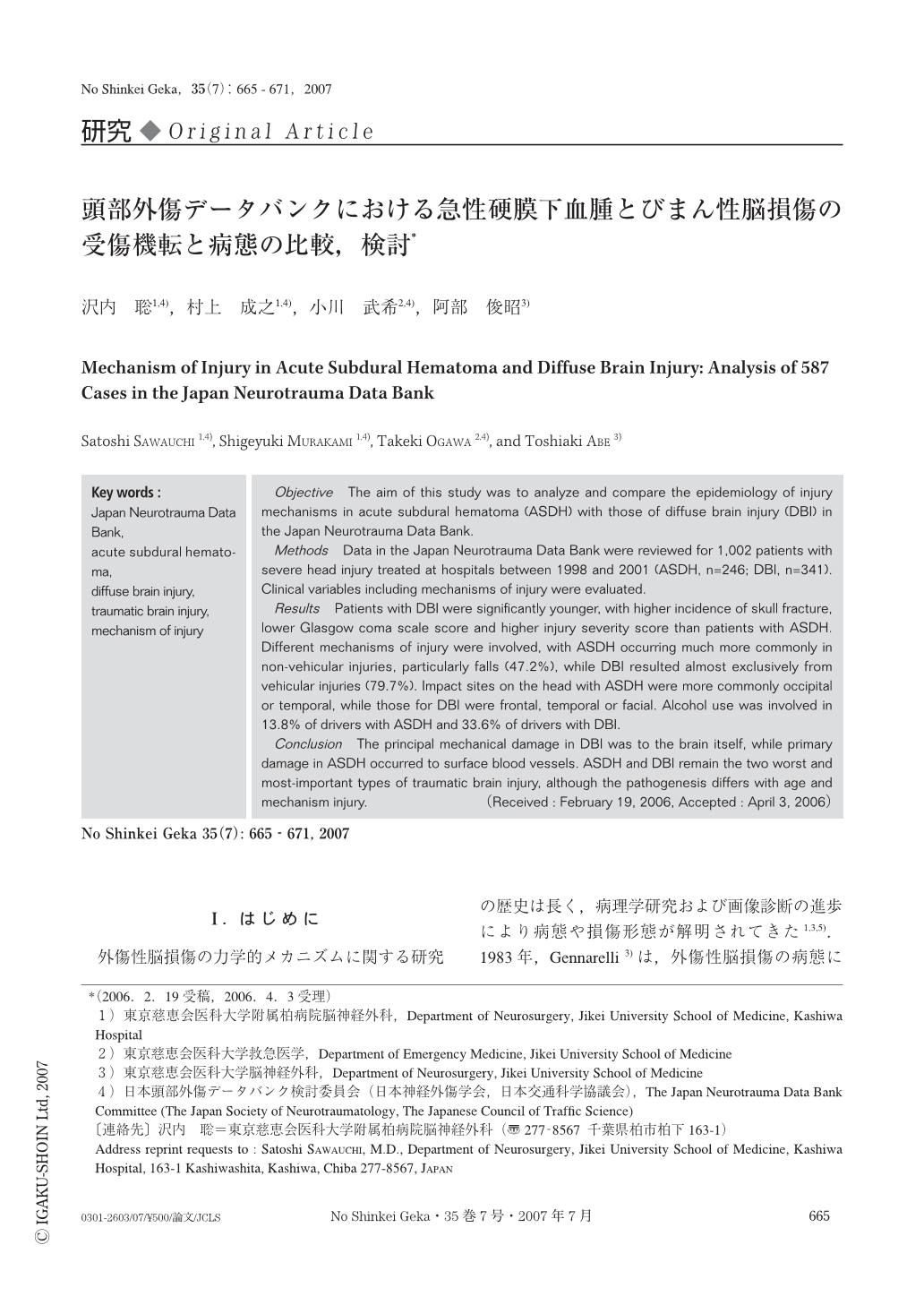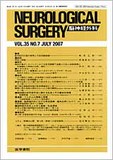Japanese
English
- 有料閲覧
- Abstract 文献概要
- 1ページ目 Look Inside
- 参考文献 Reference
Ⅰ.はじめに
外傷性脳損傷の力学的メカニズムに関する研究の歴史は長く,病理学研究および画像診断の進歩により病態や損傷形態が解明されてきた1,3,5).1983年,Gennarelli 3)は,外傷性脳損傷の病態におけるworst typeとして急性硬膜下血腫(ASDH)とびまん性軸索損傷(DAI)を挙げ,この2つの病態の発生メカニズムが異なることを提唱した.実際の臨床の現場では,両者を合併している症例も存在すると考えられるが,脳表に出血する病態と,脳深部にまで損傷が及ぶ病態の力学的メカニズムにどのような違いがあるのか興味深い.
わが国の頭部外傷データバンク(Japan Neurotrauma Data Bank:JNTDB)は,重症の外傷性脳損傷患者の臨床疫学的検討を目的として,1998年から開始された13,15).この医学的基礎資料を行政,工学系との連携において外傷性脳損傷の予防,治療に役立てる必要がある.特に,脳損傷発生の予防のためには,受傷機転を解析することが重要であると考える.本研究は,JNTDBにおけるASDH,びまん性脳損傷(DBI)の受傷機転の疫学的特徴を解析することを目的とした.
Objective The aim of this study was to analyze and compare the epidemiology of injury mechanisms in acute subdural hematoma (ASDH) with those of diffuse brain injury (DBI) in the Japan Neurotrauma Data Bank.
Methods Data in the Japan Neurotrauma Data Bank were reviewed for 1,002 patients with severe head injury treated at hospitals between 1998 and 2001 (ASDH, n=246; DBI, n=341). Clinical variables including mechanisms of injury were evaluated.
Results Patients with DBI were significantly younger, with higher incidence of skull fracture, lower Glasgow coma scale score and higher injury severity score than patients with ASDH. Different mechanisms of injury were involved, with ASDH occurring much more commonly in non-vehicular injuries, particularly falls (47.2%), while DBI resulted almost exclusively from vehicular injuries (79.7%). Impact sites on the head with ASDH were more commonly occipital or temporal, while those for DBI were frontal, temporal or facial. Alcohol use was involved in 13.8% of drivers with ASDH and 33.6% of drivers with DBI.
Conclusion The principal mechanical damage in DBI was to the brain itself, while primary damage in ASDH occurred to surface blood vessels. ASDH and DBI remain the two worst and most-important types of traumatic brain injury, although the pathogenesis differs with age and mechanism injury.

Copyright © 2007, Igaku-Shoin Ltd. All rights reserved.


